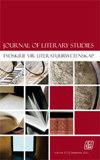去殖民化Adamastor:从《lucusiads》到《十三美分》
IF 0.1
4区 文学
0 LITERARY THEORY & CRITICISM
引用次数: 0
摘要
1999年和2000年,出现了两份文本,旨在将后种族隔离时代的南非作为一个新国家来应对,并在民族起源的神话上翻了一番。其中一幅是西里尔·库切为威特沃特斯兰德大学威廉·库伦图书馆委托创作的巨幅油画《T’kama Adamastor》,这幅画的主题是Luís Vaz de Camões在他的史诗《卢西ads》(1572)中创造的Adamastor形象,但安德烈·布林克在他的小说《风暴之角:Adamastor的第一次生活》(1993)中重新诠释了这一形象。2000年,另一个文本出现,重新审视和重新想象创造神话,也引用了Adamastor的故事。这是K. Sello Duiker的获奖处女作《十三美分》。正如我所说,《十三美分》与白人作家和艺术家想象亚当马斯托故事的方式截然不同。本文的部分目的是重新审视和评估安德烈斯·沃尔特·奥列芬特对南非民族文化问题和阿达马斯托故事本身的批判性干预。本文章由计算机程序翻译,如有差异,请以英文原文为准。
Decolonising Adamastor: From The Lusiads to Thirteen Cents
In 1999 and 2000, two texts appeared that aimed to grapple with post-apartheid South Africa as a new nation, and that doubled back on national myths of origin. One of these, a massive painting entitled T’kama Adamastor by Cyril Coetzee, commissioned for the William Cullen Library at the University of the Witwatersrand, focused on the figure of Adamastor that had been created by Luís Vaz de Camões in his epic poem The Lusiads (1572), but as reinterpreted by André Brink in his novel Cape of Storms: The First Life of Adamastor (1993). In 2000, another text appeared that re-examined and reimagined creation myths, and also referenced the Adamastor story. This was K. Sello Duiker’s award-winning debut novel Thirteen Cents. As I argue, Thirteen Cents presents a radical break with the ways in which the Adamastor story has been imagined by white writers and artists. Part of the aim of the essay is to revisit and assess Andries Walter Oliphant’s critical interventions on the question of a national South African culture, and on the Adamastor story itself.
求助全文
通过发布文献求助,成功后即可免费获取论文全文。
去求助
来源期刊

Journal of Literary Studies
Multiple-
CiteScore
0.50
自引率
0.00%
发文量
0
期刊介绍:
The Journal of Literary Studies publishes and globally disseminates original and cutting-edge research informed by Literary and Cultural Theory. The Journal is an independent quarterly publication owned and published by the South African Literary Society in partnership with Unisa Press and Taylor & Francis. It is housed and produced in the division Theory of Literature at the University of South Africa and is accredited and subsidised by the South African Department of Higher Education and Training. The aim of the journal is to publish articles and full-length review essays informed by Literary Theory in the General Literary Theory subject area and mostly covering Formalism, New Criticism, Semiotics, Structuralism, Marxism, Poststructuralism, Psychoanalysis, Gender studies, New Historicism, Ecocriticism, Animal Studies, Reception Theory, Comparative Literature, Narrative Theory, Drama Theory, Poetry Theory, and Biography and Autobiography.
 求助内容:
求助内容: 应助结果提醒方式:
应助结果提醒方式:


